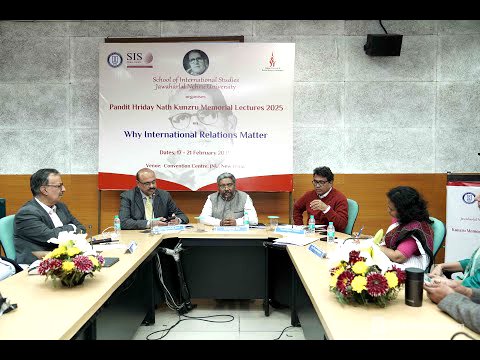TLDR;
The discussion revolves around India's newly approved Research Development and Innovation (RDI) scheme, a ₹1 lakh crore initiative designed to boost the nation's research and innovation ecosystem. The scheme aims to provide long-term, low-interest financing to encourage private sector investment in R&D, particularly in sunrise sectors and critical technologies. Key points include:
- The RDI scheme marks a shift towards industry-led R&D, fostering a stronger connection between knowledge creation and market application.
- The initiative seeks to address India's low R&D spending as a percentage of GDP and promote technology sovereignty amid increasing global protectionism and sanctions.
- The scheme aims to create a larger pool of scientists and researchers within the private sector, driving innovation and global competitiveness.
Introduction to the RDI Scheme [0:14]
The host introduces the RDI scheme, highlighting its objective to provide long-term financing at low or nil interest rates to stimulate private sector investment in research, development, and innovation. The scheme aims to encourage private sector R&D in sunrise domains and sectors critical for economic security, strategic purposes, and self-reliance. It also focuses on financing transformative projects, supporting technology acquisition, and establishing a deep tech fund of funds. The discussion will cover the scheme's funding mechanism and its role in fostering self-reliance and global competitiveness.
Significance of the RDI Fund [2:29]
Professor Sharma emphasizes the historical importance of the RDI fund, noting it as a new beginning for knowledge creation, consumption, and the economic impact of R&D. The fund will drive R&D and innovation from the industry end, with academia as a partner. This approach is crucial for developing critical technologies that India needs independently. Sharma points out that India's weakness has been in converting knowledge into economic value, and this fund aims to bridge that gap by providing long-term, affordable, and risk financing. The government's role is to mitigate the initial risks, allowing industry to fully adopt the technologies as they mature.
Private Sector Perspective on RDI [5:20]
Dr. Chri highlights that India spends very little on R&D, especially in the private sector, which is not sufficient for the country's growth. He stresses the need for technology sovereignty, as global sanctions and protectionism make it imperative for India to own critical technologies. The RDI scheme will encourage the private sector to invest in R&D by sharing the risk, with the government providing financial support for both corporate and startup ventures. This initiative aims to shift the private sector's focus from short-term profits to long-term innovation and IP creation in India.
Unlocking Innovation Potential [10:23]
Professor Sharma discusses how long-term, low-interest loans will unlock innovation in sunrise sectors like deep tech, AI, semiconductors, and clean energy. Industry-led R&D provides relevance and direction that academia often lacks. India needs more scientists engaged in R&D, and this scheme will create a pool of scientists in the private sector who understand market realities. Government support through risk capital and being a first buyer of critical technologies will further incentivize industry involvement. Sharma asserts that this scheme is a game-changer with the potential to be transformational.
Mobilizing Human Capital [14:29]
Dr. Chri emphasizes the importance of researchers in making the RDI scheme successful. The private sector has been hesitant to invest in researchers due to perceived risks, preferring to import and rebrand products. He suggests that the government should provide challenges to the private sector and startups, guaranteeing business for successful products. This approach, similar to DARPA in the US, can create a virtuous cycle of innovation. The scheme can also attract diaspora talent back to India by offering competitive salaries in the private sector.
Supporting Risky Innovations and Future Vision [20:38]
Professor Sharma affirms that the RDI scheme supports risky but breakthrough innovations. He mentions successful technology missions like the quantum mission, which operate at arm's length from the government with the flexibility to work with both government institutions and industry. Sharma highlights the need for deregulation, liberalization, and a cultural transformation to foster innovation. He introduces the concept of "L1 for the nation," where the government prioritizes the lowest cost for the nation when making purchases, favoring indigenous products.
Vision for India's Technological Future [26:58]
Dr. Chri suggests identifying 12-14 key technology areas within the RDI scheme to focus on for the next 5-10 years, aiming to create top-tier global companies in India. He emphasizes the need to shift from a services-led to a product-led country, with new government missions being product-oriented. The RDI scheme will support translation research, and India should be willing to acquire technology where necessary. Chri advocates for big thinking, aspiring to create Indian equivalents of global tech giants. He concludes that aspiration is more important than resources, and the government is providing the necessary resources and ease of doing R&D.









